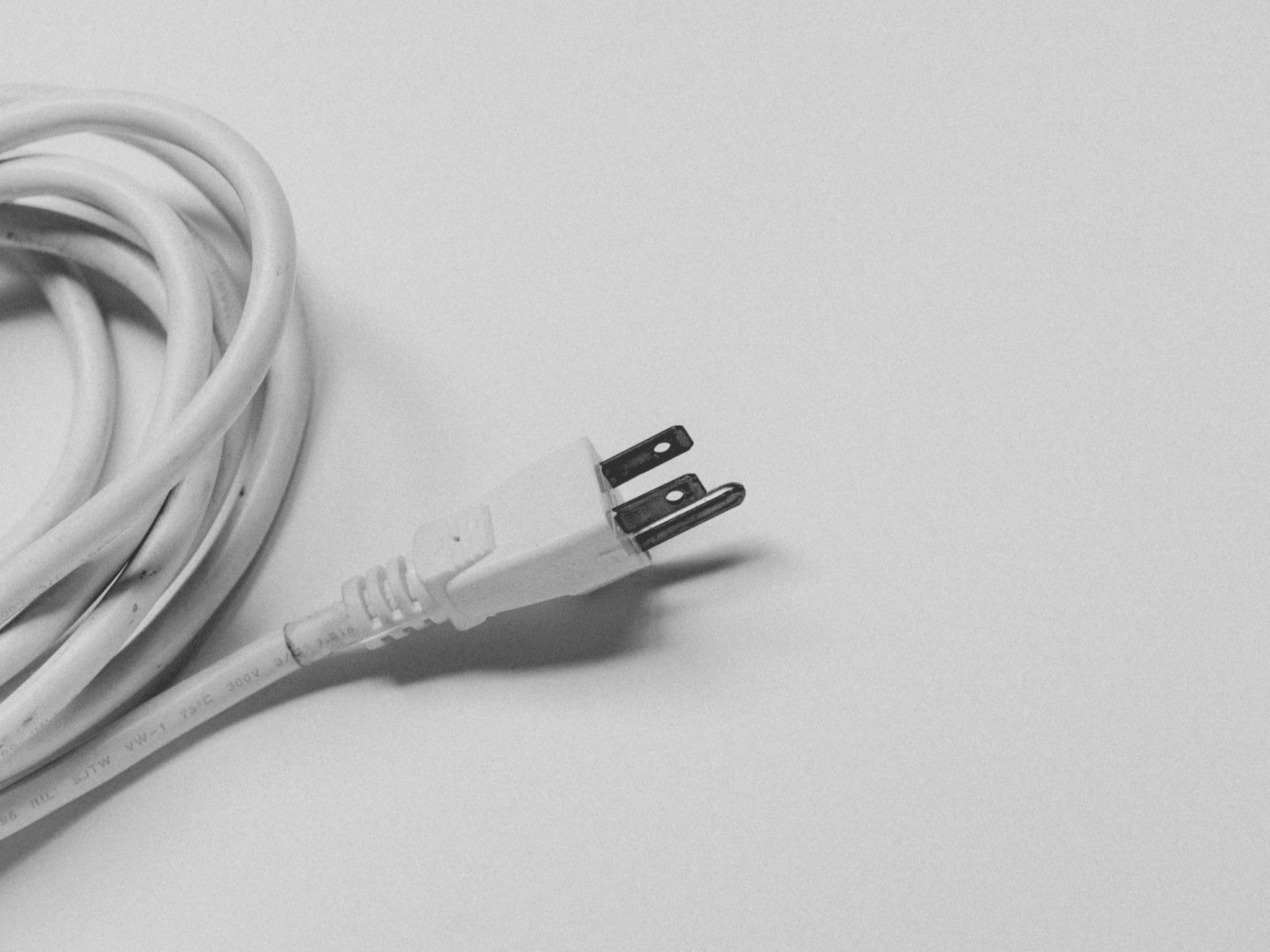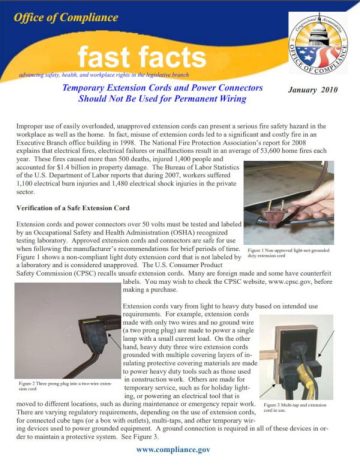Improper use of easily overloaded, unapproved extension cords can present a serious fire safety hazard in the workplace as well as the home. In fact, misuse of extension cords led to a significant and costly fire in an Executive Branch office building in 1998. The National Fire Protection Association’s report for 2008 explains that electrical fires, electrical failures or malfunctions result in an average of 53,600 home fires each year. These fires caused more than 500 deaths, injured 1,400 people and accounted for $1.4 billion in property damage. The Bureau of Labor Statistics of the U.S. Department of Labor reports that during 2007, workers suffered 1,100 electrical burn injuries and 1,480 electrical shock injuries in the private sector.
Verification of a Safe Extension Cord
Extension cords and power connectors over 50 volts must be tested and labeled by an Occupational Safety and Health Administration (OSHA) recognized testing laboratory. Approved extension cords and connectors are safe for use when following the manufacturer’s recommendations for brief periods of time. Figure 1 shows a non-compliant light duty extension cord that is not labeled by a laboratory and is considered unapproved. The U.S. Consumer Product Safety Commission (CPSC) recalls unsafe extension cords. Many are foreign made and some have counterfeit labels. You may wish to check the CPSC website, www.cpsc.gov, before making a purchase.
Extension cords vary from light to heavy duty based on intended use requirements. For example, extension cords made with only two wires and no ground wire (a two prong plug) are made to power a single lamp with a small current load. On the other hand, heavy duty three wire extension cords grounded with multiple covering layers of insulating protective covering materials are made to power heavy duty tools such as those used in construction work. Others are made for temporary service, such as for holiday lighting, or powering an electrical tool that is moved to different locations, such as during maintenance or emergency repair work. There are varying regulatory requirements, depending on the use of extension cords, for connected cube taps (or a box with outlets), multi-taps, and other temporary wiring devices used to power grounded equipment. A ground connection is required in all of these devices in order to maintain a protective system. See Figure 3.

